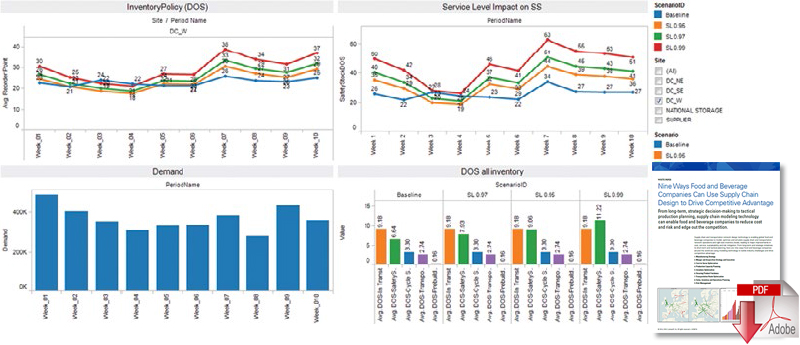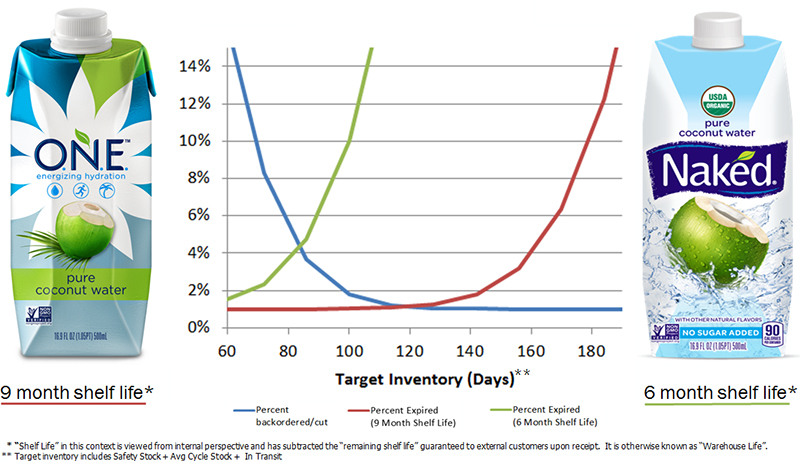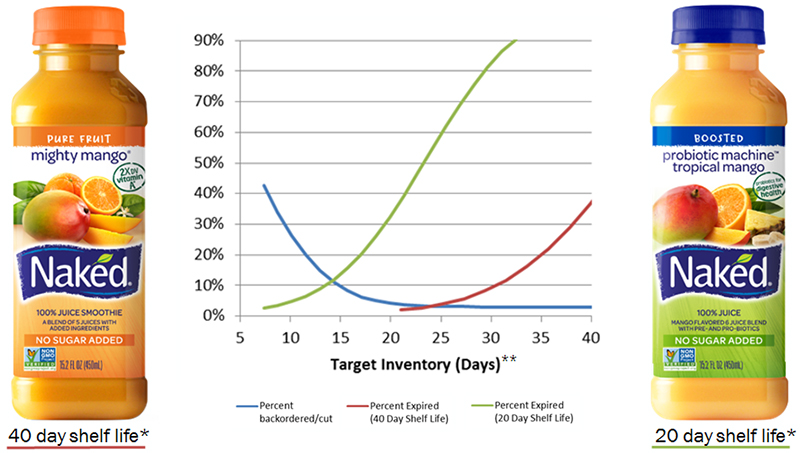A Fresh Take on Supply Chain Innovation

How big ideas can redesign your supply chain.
Companies are presented with many opportunities when they decide to enter a new market.
Venturing into unfamiliar territory offers a unique chance to innovate and make changes that benefit the business as a whole.
One of PepsiCo’s growth strategies is to proactively adapt to emerging market trends for natural, healthy and nutritious beverages.
The strategy makes the company’s supply chain more global and complex. It also presents new challenges and risks.
To manage these risks and maintain the service levels that its retail customers expect, PepsiCo needed to develop new risk management practices and redesign elements in its supply chain as it expanded its beverage lines.
These efforts have enabled PepsiCo to reap improvements that benefit both the new product lines specifically as well as the established parts of the business as a whole.
Coconut water is one of the healthy beverages that is part of the new growth strategy. A natural alternative to hydrating drinks that replenish electrolytes, coconut water is not simply an extension of PepsiCo’s traditional line of beverages.
Coconut water is a “good for you” product that is an alternative to “fun for you” products like Pepsi.
PepsiCo’s coconut water brands, O.N.E and Naked Juice, are manufactured in remote regions of the world, including Southeast Asia. But the majority of the customer demand is in the U.S., with other markets that include Canada and the United Kingdom.
In this new line of business, lead times are longer and supply is more variable than in PepsiCo’s traditional beverage supply chain.
The company has had to build enough inventory to minimize stock outs - without causing excessive losses through obsolescence.
Other challenges include the need to develop a seasonal inventory strategy to address both U.S. demand fluctuations as well as the supply risk of the disruptive typhoon season in Southeast Asia.
Overall, the task has been to design a more risk-informed supply chain that mitigates the new risks while also being more resilient to supply disruptions and responsive to demand fluctuations.
PepsiCo approached this task on five fronts:
1. Supply chain design with contingencies
PepsiCo’s coconut water supply chain partners source raw materials locally, collecting the water as part of the coconut processing operation and packaging it into finished goods cases.
Packaging materials come from Germany, Pakistan, Serbia and Singapore. The process is Fair Trade Certified, which ensures a sustainable supply chain that adheres to rigorous social, environmental and economic standards.
To optimize logistics, PepsiCo utilizes U.S. warehouses next to seaports that enable it to flow product through both the U.S. East and West Coasts. Domestic U.S. co-packers provide an option to postpone the final packing of the product closer to market.
This higher-cost, backup alternative would only be implemented in the event of a supply disruption.
2. Inventory optimization
Sourcing internationally often means long lead times and high supply variability.
Having enough inventory to meet customer service targets begins to introduce expiration risk, especially with organic products with a shorter shelf life.
Working with academics and historical data, PepsiCo derived formulas to predict both the percentage of stock outs as well as the percentage of obsolete/expired product, and then implemented a solution that strikes the optimal balance.
While this new solution for balancing supply & demand variability, lead time, and shelf life was developed for the coconut water business, PepsiCo found opportunities to re-apply the formulas to other emerging product categories with supply challenges, such as Naked Juice probiotic smoothies.
These beverages have an even shorter shelf life - as low as 20 days - compared to other items in PepsiCo’s portfolio of premium juice beverages.
Once again, adapting the formulas for the product-specific characteristics of probiotic beverages allowed PepsiCo to find the best balance for that product group.
The solution is now part of PepsiCo’s sales & operations planning system, which ensures that every stakeholder within the company is aligned around the solution’s output.
For example, stakeholders can align on the inventory target for each product group while balancing customer service (trying to avoid being out of stock) and obsolescence. (See chart, “Short lead time, short shelf life products.”)
Long lead time, long shelf life products
Short lead time, short shelf life products
3. Early-warning systems
The earlier a disruption in a supply chain is detected, the sooner it can be dealt with. PepsiCo worked with suppliers to improve communications and data quality around possible disruptions. For example, routine checkpoints were established and on-site contacts identified to ensure there was regular communication between the supply chain organization and the supplier base. Data formats were changed to make sure data was actionable. Building relationships and developing true partnerships were keys to unlocking this particular supply chain improvement.
4. Buffers around stock, capacity, and lead-time
Peak demand for coconut water is driven by climate - U.S. demand for hydration products rises in the summer, for instance - and PepsiCo developed a system of buffers aligned with these periods. Other strategies for building resilience include dual-sourcing in Southeast Asia and securing backup supply capabilities in the United States. Improving supply flexibility has unlocked lead-time improvement, while quantifying capacity limitations has allowed for better contingency planning. Fully leveraging these last two aspects has reinforced the need for strong partnership and open communication with suppliers.
5. Brand equity
Consumers tend to be more tolerant of supply shortages when the product concerned has a strong brand. A cross-functional effort involving marketing and sales teams along with supply chain professionals has worked to build the product’s brand equity. Certifications such as Fair Trade, Non-GMO, and Organic have also been selectively implemented, which can inspire consumers to embrace PepsiCo’s brands. As a supply chain resilience strategy, however, brand loyalty does have limitations; when buying perishable products, consumers will not wait a long time if a product is out of stock before switching to a competitor’s offerings.
Overall, managing the challenges of new product offerings prompted PepsiCo to take a comprehensive look at its supply chain design to build in additional risk management through mitigation and resilience. Importantly, the company also identified a new source of supply chain innovation: new product supply chain design.
And by reapplying its experience with one new product line to another, the company achieved broader competitive gains - improving customer service, becoming better able to adapt to change, and controlling costs more effectively.
Source: This article originally appeared on MITSloan Management Review and was republished with permission of Longitudes, the UPS blog devoted to the trends shaping the global economy.
Related: Supply Chain & Big Data ÷ Analytics = Innovation
Nine Ways Food and Beverage Companies Can Use Supply Chain Design to Drive Competitive Advantage

Article Topics
LLamasoft News & Resources
Talking Supply Chain: The Truth About Digital Twins Coupa brings LLamasoft into the fold in $1.5 billion acquisition Coupa Acquires AI-Powered Supply Chain Design & Planning Leader LLamasoft for $1.5 billion Smoother execution through S&OP A Fresh Take on Supply Chain Innovation Nine Ways Food and Beverage Companies Can Use Supply Chain Design to Drive Competitive Advantage Brexit, the Next Big Disruption for the Supply Chain? More LLamasoftLatest in Supply Chain
Microsoft Unveils New AI Innovations For Warehouses Let’s Spend Five Minutes Talking About ... Malaysia Baltimore Bridge Collapse: Impact on Freight Navigating TIm Cook Says Apple Plans to Increase Investments in Vietnam Amazon Logistics’ Growth Shakes Up Shipping Industry in 2023 Spotlight Startup: Cart.com is Reimagining Logistics Walmart and Swisslog Expand Partnership with New Texas Facility More Supply Chain















